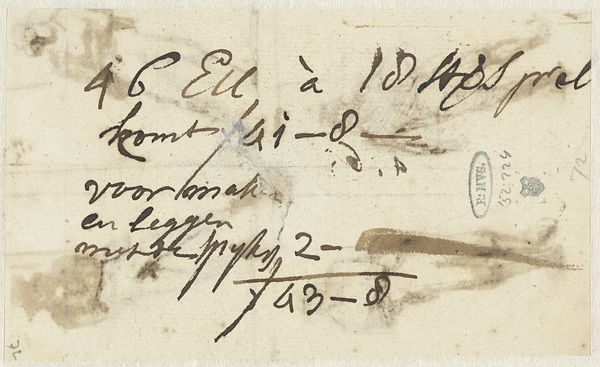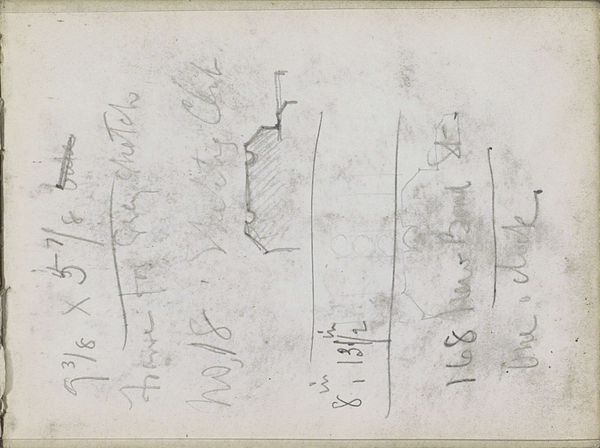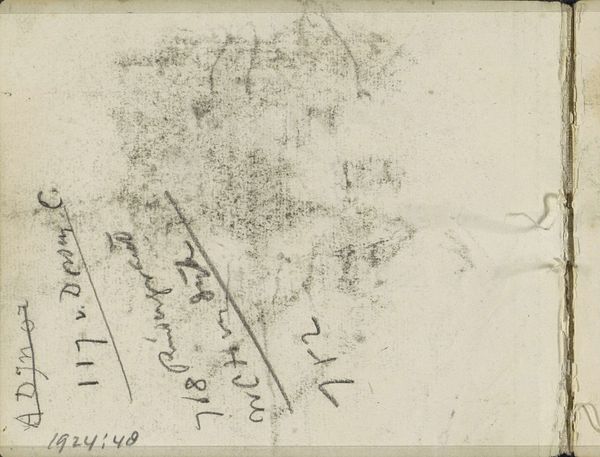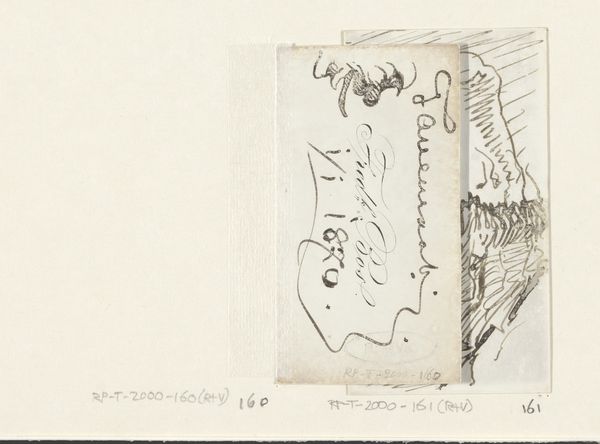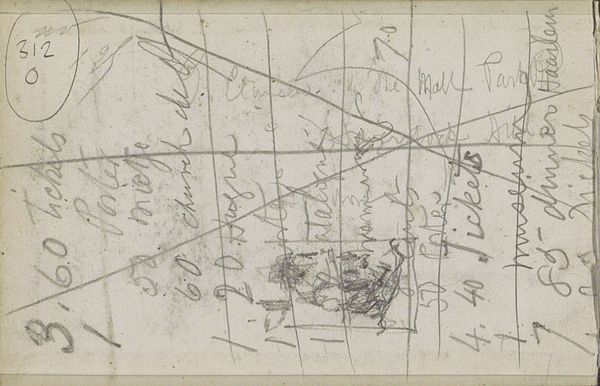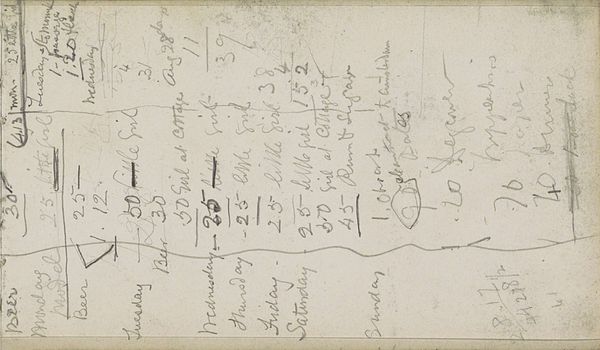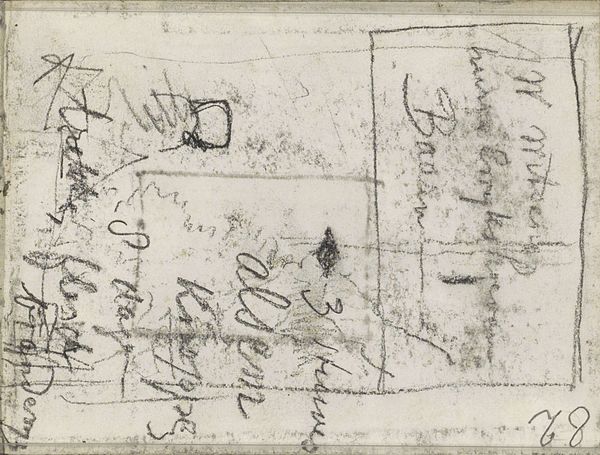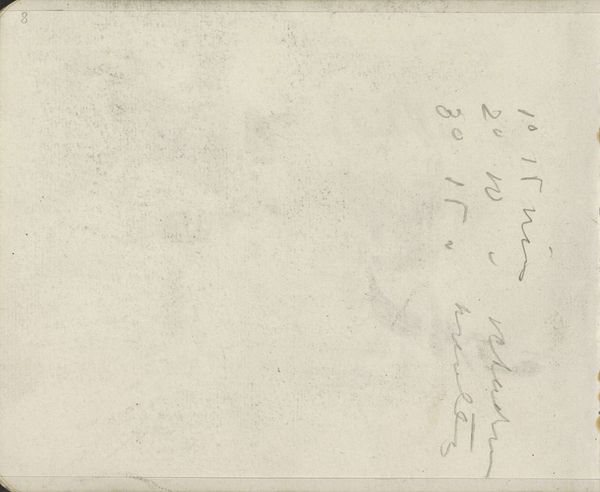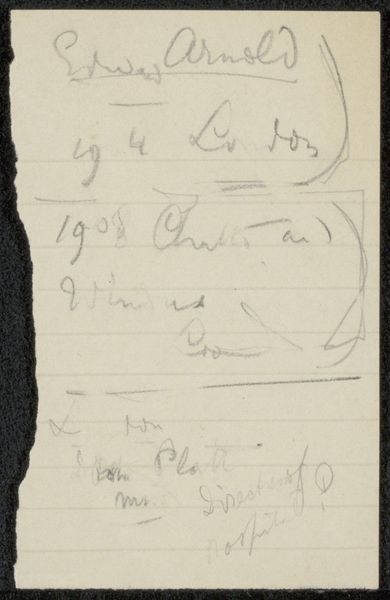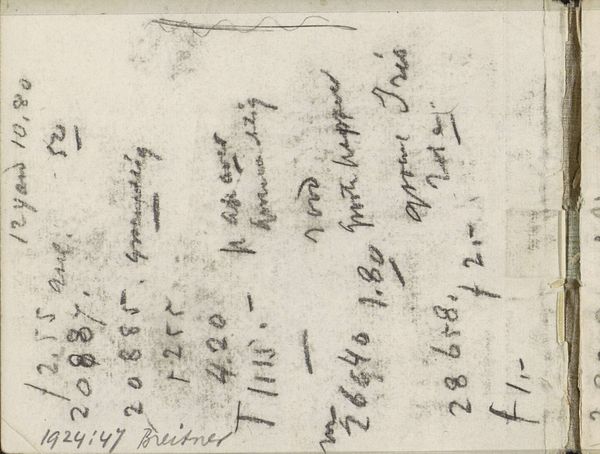
Dimensions: height 36 mm, width 71 mm
Copyright: Rijks Museum: Open Domain
Editor: This is "Kop" by Johannes Tavenraat, likely created between 1840 and 1880. It's a drawing done with ink on paper, and it's currently held at the Rijksmuseum. The composition seems split between portrait sketches and some handwritten numbers; the whole thing looks like a page ripped from a notebook. What strikes you most about this piece? Curator: The dichotomy is, indeed, the work's most arresting formal attribute. Note the distinct visual languages at play. The left, an exploration of form through gestural lines, the right, a series of symbolic marks indicative of calculation or record. How might we interpret the tensions between these two modes of representation? Editor: Are you suggesting that the juxtaposition is the key to understanding the work? It feels almost like two separate artists working on the same page. Curator: Precisely. Consider the inherent qualities of each section. The portrait sketches, fluid and suggestive, invite subjective interpretation. The numbers, by contrast, are rigid, objective. The artist implicitly poses the question: can both exist within the same artistic framework? What happens when emotive form abuts logic? Editor: So, you're focused less on *what* is depicted, and more on *how* it's depicted, and what that contrast suggests about the nature of art itself? Curator: Precisely. Forget the illusionism for a moment and engage with the physical structure, its syntax and dialectic. What assumptions, what truths, does that reveal to us? How can we further interrogate that argument and where do the materials drive our analysis. Editor: I see what you mean! By analyzing the piece in terms of its own visual language, we can learn more than just from historical or biographical details. Curator: Exactly. Focusing on its structural components, how line meets calculation and materiality transcends both. It illuminates our viewing.
Comments
No comments
Be the first to comment and join the conversation on the ultimate creative platform.
